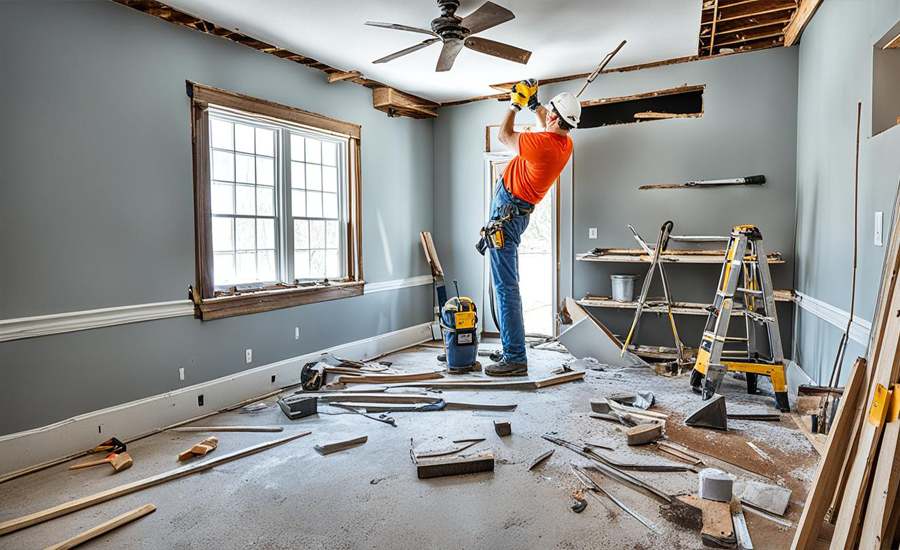
Renovation: Breathing New Life into Existing Spaces
Renovation is the process of improving, updating, or restoring a structure to enhance its functionality, aesthetics, and value. It plays a vital role in construction, enabling homeowners, businesses, and property managers to adapt spaces to changing needs or modern standards without the expense of starting from scratch. Renovation projects can range from minor cosmetic upgrades to extensive structural transformations.
What Is Renovation?
Renovation involves modifying an existing structure to:
Improve its condition or functionality.
Modernize its appearance to align with current trends.
Repair damage caused by age, weather, or wear and tear.
Optimize space usage for better comfort or efficiency.
Types of Renovation
1. Residential Renovation
Focused on enhancing homes, apartments, or residential complexes, this includes:
Kitchen and bathroom remodeling.
Living room redesigns.
Adding extensions or improving outdoor spaces.
2. Commercial Renovation
This involves updating business premises such as offices, retail stores, or restaurants to meet operational needs and improve customer experience.
3. Industrial Renovation
Industrial facilities like warehouses or factories may require renovations to upgrade equipment, improve layouts, or comply with updated safety and environmental regulations.
4. Historical Renovation
Specialized renovation aimed at restoring heritage buildings while preserving their original character and historical value.
Key Steps in a Renovation Project
1. Assessment and Planning
Conducting a thorough inspection of the property to identify areas that need improvement.
Collaborating with architects and designers to develop a renovation plan that aligns with the client’s vision and budget.
2. Budgeting and Cost Estimation
Preparing a detailed estimate of material, labor, and additional costs to ensure financial clarity.
Allocating a contingency fund for unexpected expenses.
3. Design Development
Creating updated layouts, sketches, or 3D models to visualize the changes.
Selecting materials, finishes, and fixtures to achieve the desired look and functionality.
4. Permit Acquisition
Ensuring compliance with local building codes and obtaining necessary permits for structural modifications.
5. Construction and Execution
Demolition: Removing old or damaged components.
Structural Updates: Repairing or reinforcing walls, floors, or foundations.
Installation: Adding new elements like plumbing, electrical systems, or fixtures.
Finishing Touches: Painting, flooring, and interior decoration to complete the look.
6. Inspection and Handover
Conducting final inspections to ensure quality and safety.
Delivering the renovated space to the client, ready for use.
Benefits of Renovation
1. Improved Functionality
Renovation allows spaces to be tailored to the current needs of residents or businesses, improving usability and convenience.
2. Increased Property Value
Upgrades and modern designs enhance the market value of a property, making it more appealing to buyers or tenants.
3. Energy Efficiency
Renovations often include installing energy-efficient windows, insulation, or appliances, reducing utility costs and environmental impact.
4. Enhanced Aesthetics
Updating finishes, colors, and layouts creates a fresh, modern look that reflects personal or brand identity.
5. Cost-Effectiveness
Renovating is often more affordable than rebuilding, making it a practical solution for improving existing spaces.
Challenges in Renovation
1. Hidden Issues
Unforeseen problems, such as structural damage or outdated wiring, may surface during renovation, increasing costs and timelines.
2. Budget Constraints
Balancing aspirations with financial limitations can be challenging, especially for large-scale projects.
3. Disruptions
Renovation work can be disruptive, especially for properties in active use, requiring careful planning to minimize inconvenience.
4. Permit Delays
Securing approvals for certain modifications can slow down the project.
Popular Renovation Trends
1. Open Floor Plans
Removing walls to create open, flowing spaces that maximize natural light.
2. Smart Home Integration
Adding smart lighting, thermostats, and security systems for modern convenience.
3. Sustainable Materials
Using eco-friendly materials like reclaimed wood, recycled steel, or low-VOC paints.
4. Luxurious Bathrooms
Spa-like designs with rain showers, freestanding tubs, and high-end finishes are increasingly popular.
5. Kitchen Upgrades
Modern kitchens with islands, energy-efficient appliances, and sleek cabinetry remain a top priority for homeowners.
The Role of Construction Companies in Renovation
Professional construction companies bring expertise, efficiency, and quality assurance to renovation projects. Their services include:
Detailed consultations to understand client needs.
Comprehensive project management from planning to execution.
Skilled craftsmanship and use of high-quality materials.
Adherence to timelines, budgets, and safety standards.

